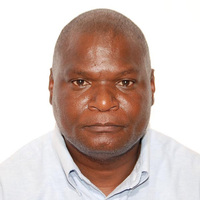This program is currently on indefinite hold due to changing NIH policies.
Amount available: $30,000 in direct costs for 1 year
Apply through the UCSF Resource Allocation Program (RAP) portal
The International Mentored Scientist Award seeks to provide a mentored career development opportunity in HIV research for international investigators affiliated with UCSF. Applicants for this award must indicate a UCSF-affiliated faculty research mentor(s) in HIV who will commit to guiding the applicant for the application process and throughout the duration of the proposed project. Project proposals should be geared toward the interests of the applicant (e.g., clinical, basic, implementation science and/or behavioral-epidemiological research) and focus on HIV research in the investigator’s home country.
Eligibility
Researchers (all levels), post-doctoral fellows, and trainees located at a UCSF-affiliated foreign institution who have not received an NIH R01- equivalent grant in HIV/AIDS are eligible. Please note that CFAR is not allowed to provide funding to any investigators who have received HIV-related R01 awards. More senior faculty members may apply only if they are newly entering the field of HIV research.
Designation of Mentor (Critical)
Mentoring is critical to the training component of the CFAR International Mentored Scientist awards. All International Mentored award applications require a faculty research mentor from UCSF or a UCSF-affiliated institution (https://cfar.ucsf.edu/about/partners). Applications without a mentor will be disqualified.
Applicants must identify their UCSF-affiliated mentors and arrange to receive mentor advice and guidance on the research portion of their application well before it is submitted (typically at least two months before the RAP deadline). CFAR is no longer available to assist with mentor identification.
Projects must be within NIH’s HIV/AIDS research high or medium priority areas. Projects in closely related areas (e.g. TB, HCV, drug use, etc.) must be clearly linked to HIV in order to be eligible for CFAR funding.
CFAR requests that applicants review the NIAID HIV Language Guide as they prepare their proposals so that they can follow best practices on language for communicating respectfully about HIV and related topics, including the use of person-first, non-stigmatizing language. Please contact us if you have any questions about this request.
The award amount is $30,000 in direct costs for one year.
For more detailed information about this RFA, please see the RAP Portal.
International Mentored Science Awardees
38 Awards
-
Development and Validation of an HPLC-UV Multiplex Assay for Therapeutic Drug Monitoring of Antiretroviral Drugs in Uganda
Development and Validation of an HPLC-UV Multiplex Assay for Therapeutic Drug Monitoring of Antiretroviral Drugs in Uganda
Abstract
Therapeutic drug monitoring (TDM) of antiretroviral drugs has optimized treatment of HIV-infected patients in resource-rich countries especially in selected ‘difficult to treat’ situations (1). The measurement of drug levels in serum samples enables timely diagnosis of low drug levels, which put patients at risk of developing treatment failure, as well as too high levels which foster toxicity of the drugs.
-
ComHealth: Cost-effective mHealth strategy to improve long-term retention in HIV care for mother-baby pairs
ComHealth: Cost-effective mHealth strategy to improve long-term retention in HIV care for mother-baby pairs
Abstract
There is an urgent global goal to eliminate new HIV infections among children by 2015 and to keep their mothers alive, with the targets of providing antiretroviral therapy to all HIV-infected pregnant women and children. Yet, barely a year away from the 2015 deadline, HIV programs are far from reaching these targets. A substantial proportion of HIV-positive pregnant women in sub-Saharan Africa are lost to follow-up after delivery.
-
Global gene array, secretome analyses, and HIV infection analyses of foreskin epithelial cells upon exposure to cervicovaginal fluid from healthy vs. women with bacterial vaginosis
Global gene array, secretome analyses, and HIV infection analyses of foreskin epithelial cells upon exposure to cervicovaginal fluid from healthy vs. women with bacterial vaginosis
Abstract
Bacterial vaginosis (BV), a disruption of the normal vaginal flora, has recently been associated with a greater than 3-fold increased risk of female-to-male HIV-1 transmission in a manner not accounted for by plasma HIV-1 RNA load(1). We hypothesize that compared to cervicovaginal fluid (CVF) from healthy individuals, BV CVF induces an elevated pro-inflammatory and pro-chemotactic response in cells of the foreskin which may facilitate transmission.
-
Evaluation of a point-of-care assay for the diagnosis of Trichomonas vaginalis in women at high risk for HIV infection
Evaluation of a point-of-care assay for the diagnosis of Trichomonas vaginalis in women at high risk for HIV infection
Abstract
Trichomoniasis, caused by the protozoan parasite, Trichomonas vaginalis (TV), is the most common, curable sexually transmitted infection worldwide with a particularly high prevalence of up to 35% among women in Sub-Saharan Africa (SSA). This region of the world is also home to almost 70% of new human immunodeficiency virus (HIV) infections occurring worldwide and most of these infections occur in women. Recent studies showed that TV infection in African women is associated with a 1.5 ? 2.7-fold increased risk for HIV infection.
-
Perioperative Exposure to Blood and Body Fluids: Incidence, Causes and Attitudes in Uganda
Perioperative Exposure to Blood and Body Fluids: Incidence, Causes and Attitudes in Uganda
Abstract
Protection of operating theatre personnel from bloodborne pathogens has been neglected in Uganda. Nature, frequency, risk factors, and preventive measures for perioperative exposure of theatre personnel will be identified by conducting a 6 month cross-sectional study in Mulago Hospital, Uganda. Multiple logistic regression will analyze risk factors for exposure. Case exposure rate and cumulative risk of seroconversion of HIV will be calculated. Surveys of theatre personnel will assess knowledge, attitude, and practice for risks of perioperative bloodborne infections.
-
Frequency and evolution of HIV-1 drug resistance among Ugandan children receiving antiretroviral therapy
Frequency and evolution of HIV-1 drug resistance among Ugandan children receiving antiretroviral therapy

Abstract
Publications:
-
Family Planning Use Among Female Clients Attending The HIV/AIDS Clinic In Mbarara University Teaching Hospital
Family Planning Use Among Female Clients Attending The HIV/AIDS Clinic In Mbarara University Teaching Hospital
Abstract
The use of family planning has been shown to have strong potential to reduce new HIV infections due to unwanted fertility in Uganda. Most prevention of mother to child transmission PMTCT efforts to date have prioritized the provision of antiretroviral prophylaxis to HIV infected pregnant women, leaving voluntary contraception an underutilized approach despite evidence that preventing unintended pregnancies in the HIV infected women is an effective strategy for reducing HIV positive births and is cost effective.
-
Examining Sexual Concurrency and Sexual Networks among Married Fishermen Couples in Kisumu District, Kenya
Examining Sexual Concurrency and Sexual Networks among Married Fishermen Couples in Kisumu District, Kenya

Abstract
Determining the prevalence of sexual concurrent partnerships among married couples and the structure and characteristics of the resultant sexual networks is crucial in designing appropriate HIV prevention interventions. In this study we seek to: (a) identify the types and extent of concurrent sexual partnerships and, (b) elucidate the structure and characteristics of sexual networks that result from concurrent sexual partnerships among married fishermen couples in Kisumu, Kenya.
-
Optimizing Nevirapine Dosing in Patients Co-infected with Tuberculosis and HIV in Harare, Zimbabwe
Optimizing Nevirapine Dosing in Patients Co-infected with Tuberculosis and HIV in Harare, Zimbabwe

Abstract
Nevirapine (NVP) is the primary antiretroviral (ART) available in Zimbabwe. However, its use as first line ART is complicated by interactions with rifampicin (RIF), the primary drug available for tuberculosis (TB). In some cases ART treatment is delayed or avoided in TB co-infected patients. Previous studies of the effect of RIF on NVP pharmacokinetic (PK) exposure has been inconclusive, failing to generate specific recommendations regarding co-treatment. Moreover, PK and safety data for NVP with RIF have not been generated in our population in Zimbabwe.
-
A study to evaluate the acceptability and feasibility of providing integrated HIV and maternal and child health services thorough well child services in KwaZulu Natal, South Africa
A study to evaluate the acceptability and feasibility of providing integrated HIV and maternal and child health services thorough well child services in KwaZulu Natal, South Africa
Abstract
In the KwaZulu-Natal (KZN) province of South Africa (SA), where antenatal HIV prevalence is 39.5%, there has been substantial impact of programs to prevent mother-to-child transmission (PMTCT) of HIV.However, despite the recognized benefits of early ART initiation for HIV-infected infants and maternal health care, there is substantial loss to follow-up of HIV-infected mothers and their infants after delivery. Barriers to effective utilization of postnatal HIV care and treatment services include logistical factors, competing demands, and psychological factors such as fear of stigmatization.

